NSYSU team gives recommendations to solve sea urchin barren problem in Little Liuchiu
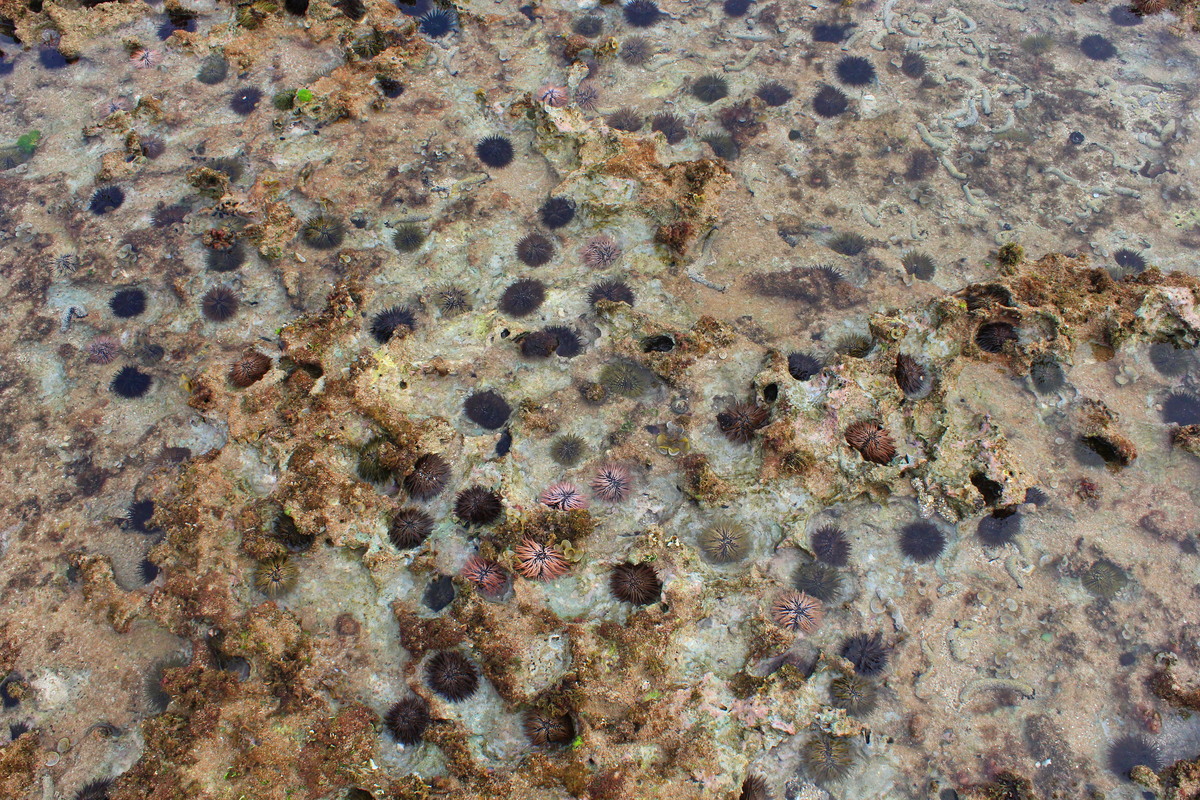
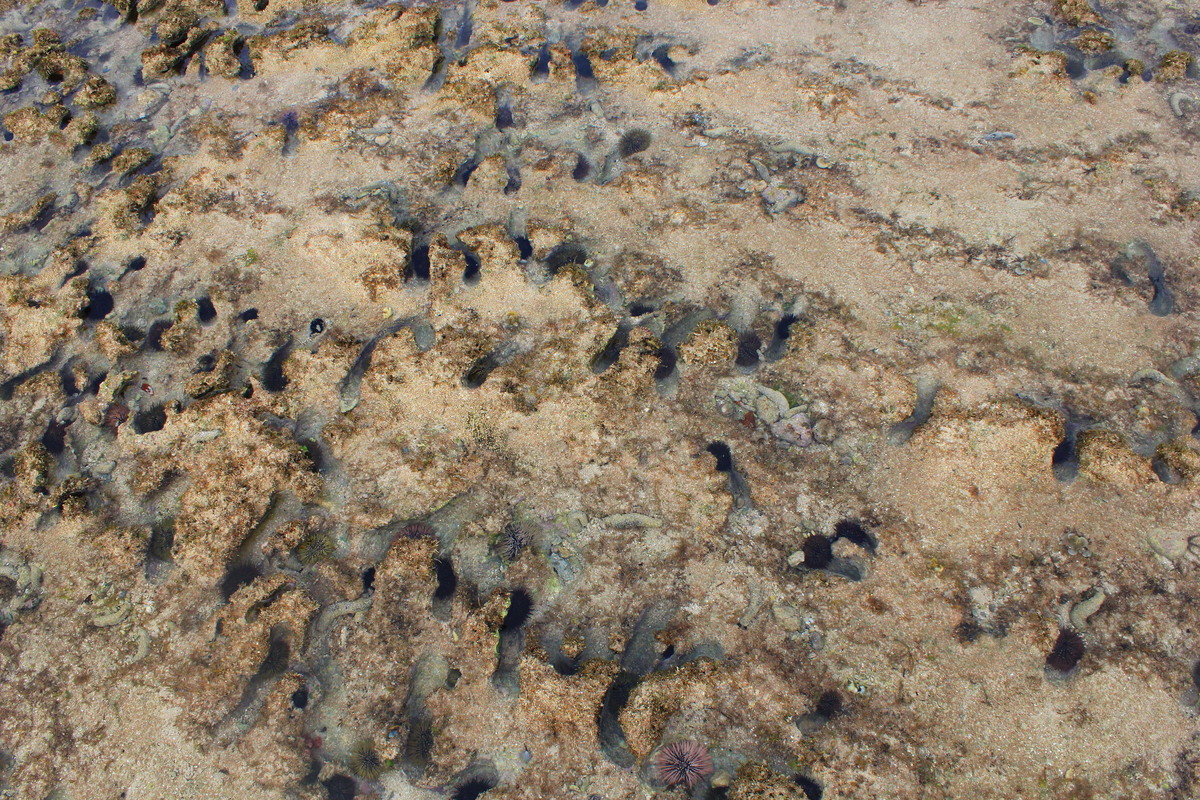
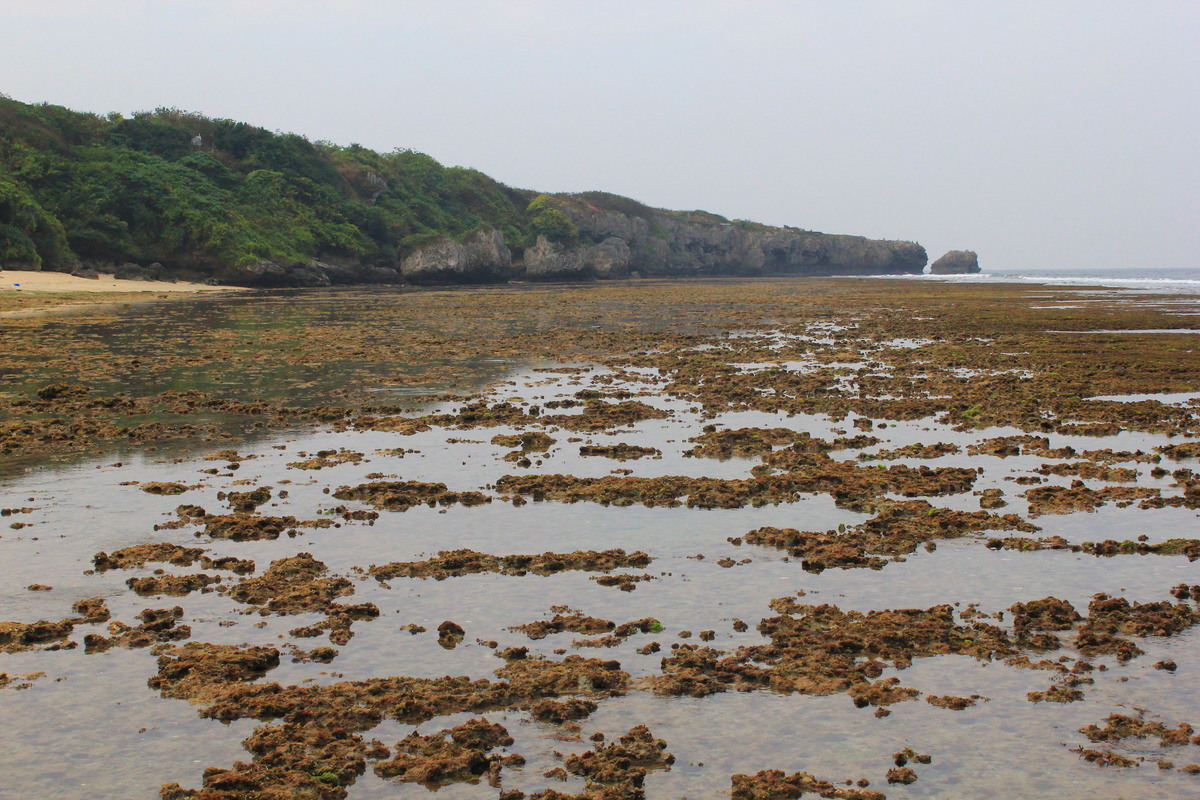
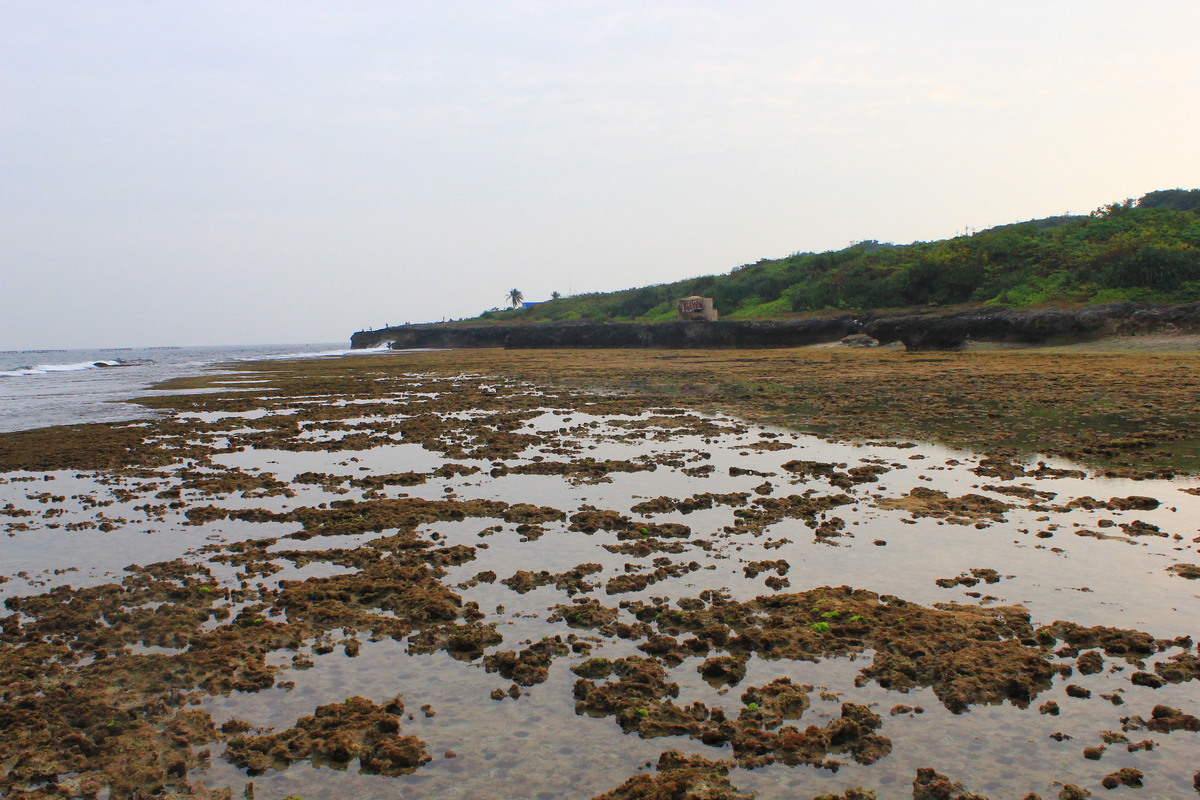
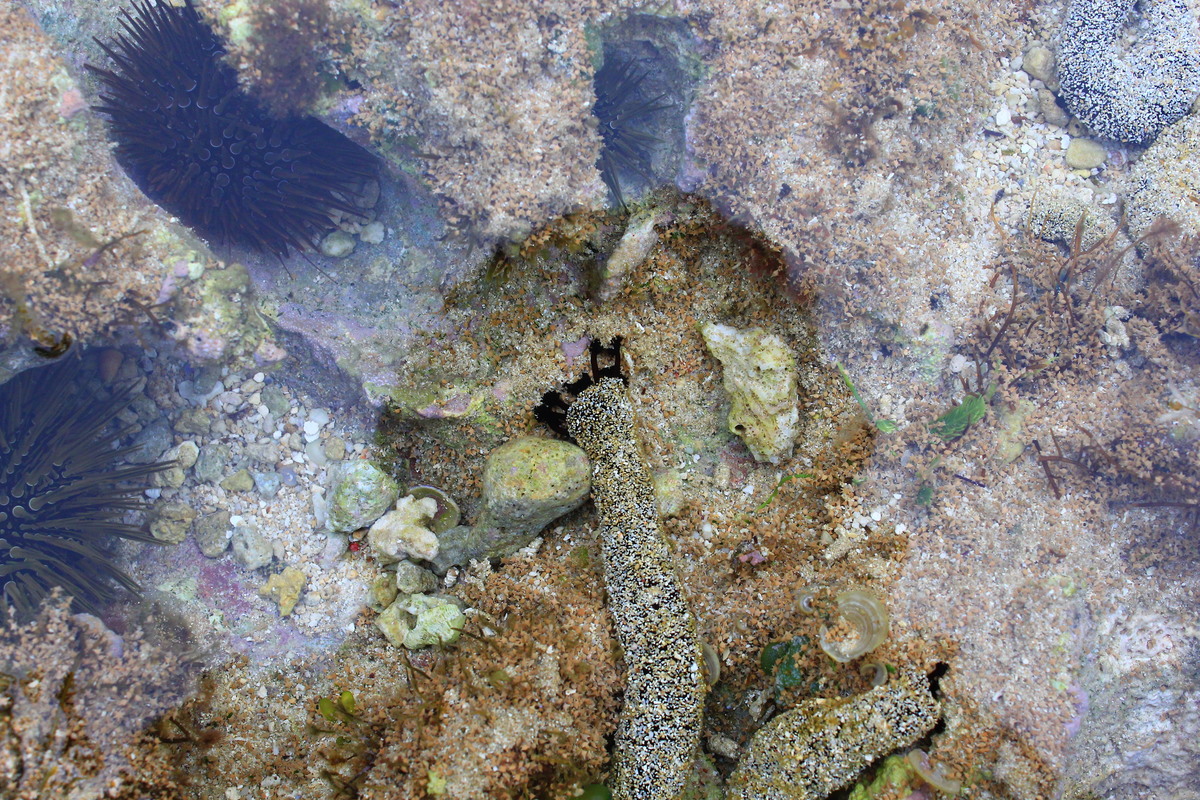
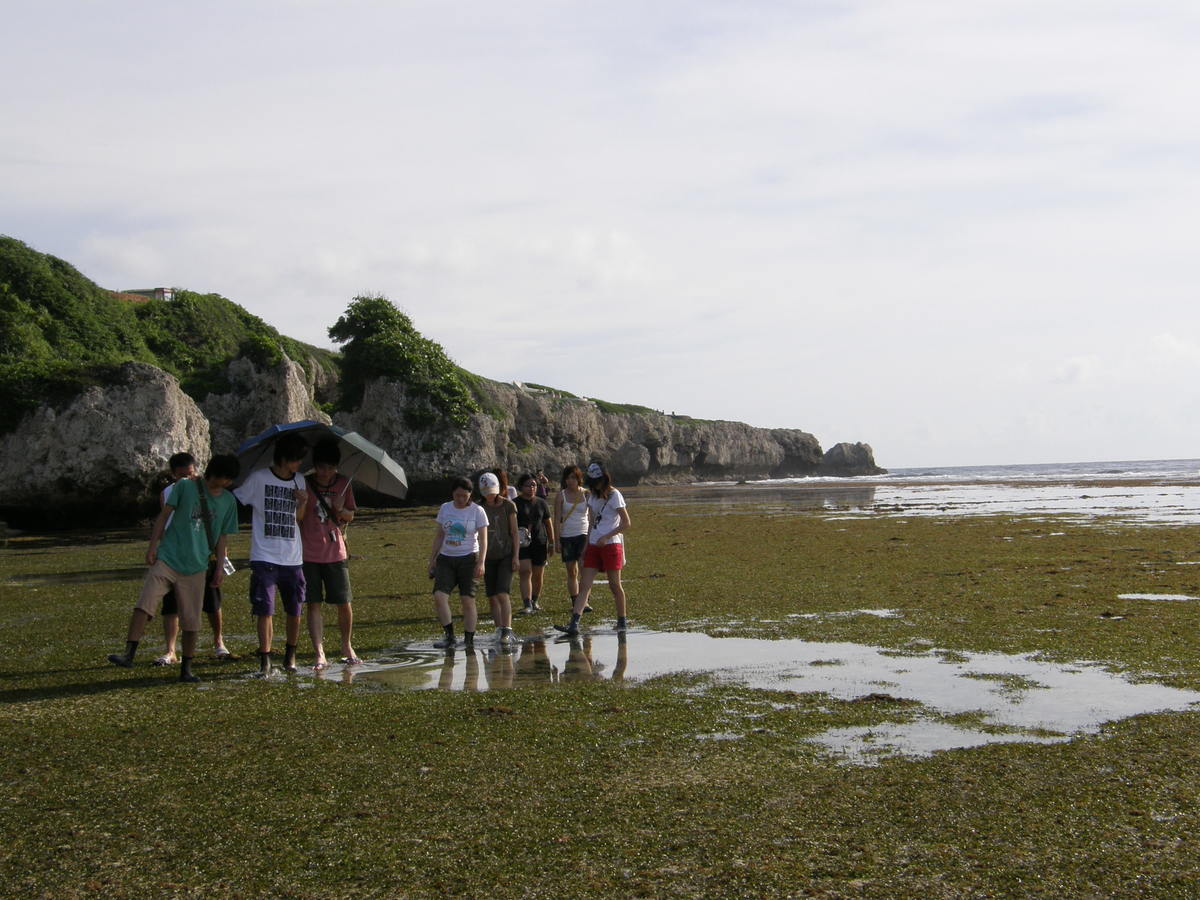
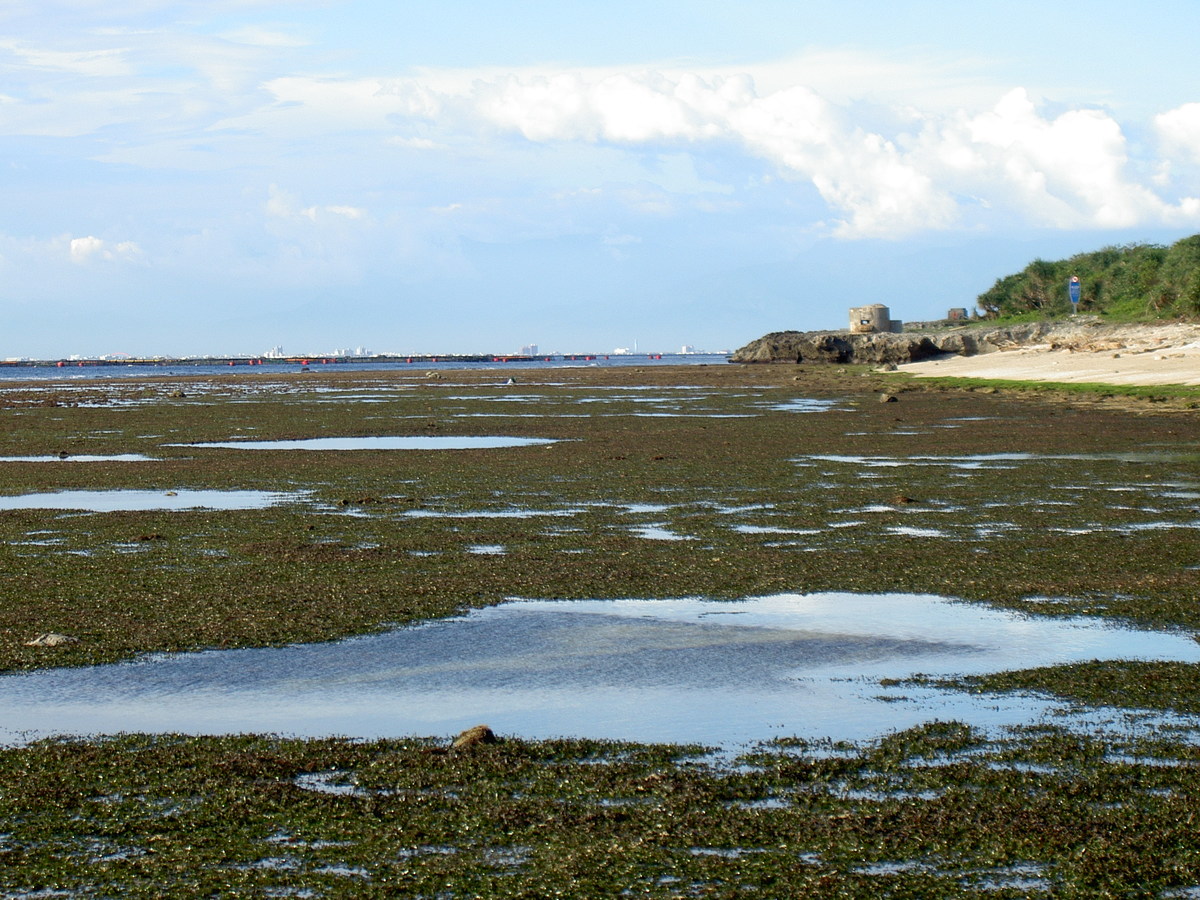
2021-02-24
In August 2020, a snorkeler attracted public’s attention with observations on severe coral bleaching in the waters of Little Liuchiu Island, Pingtung County, coupled with a large population of sea urchins and declining numbers of other species. After one year’s investigation, Distinguished Professor of the Graduate Institute of Marine Affairs at NSYSU Shui-Kai Chang and Professor Li-Lian Liu of the Department of Oceanography not only noticed that the populations of organisms in the Duozaiping intertidal zone of Little Liuchiu Island have declined significantly but also that the zone area may have become Taiwan’s first sea urchin barren. The number of sea urchins in the mid-tidal region is estimated to be as high as 800,000 to 1,000,000 (or even more). The Professors called on the relevant authorities to initiate actions to recover the ecosystem of the Duozaiping intertidal zone.
“Duozaiping intertidal zone has already become a sea urchin barren. It is covered by urchins and corals destroyed by the urchins.” Professor Chang pointed out that in coral reef ecosystems, the algae and corals are competitors. Sea urchins, herbivores of the ecosystem, feed on the algae living on the surface of the corals and leave more space for corals to grow. A certain amount of sea urchins is beneficial to corals’ development in coral reef ecosystems. However, sea urchins will overtake the habitat of seagrasses and macroalgae when the population is disproportionately large. Seagrasses and macroalgae are important producers in the waters of tropical and temperate zones, which are also a natural habitat for many species of fish and invertebrates to reproduce, feed on and hide from enemies. Marine animals will disappear without primary producers and their habitat. In the end, only reef rock and sea urchins will be left. Scientists call it a “sea urchins barren”. The habitat will continue to degrade as a result of the grazing activity of sea urchins and become a lifeless rock if no improvements are made.
NSYSU research team was invited and supported by the Pingtung County Government in 2020 to conduct a survey on benthic organisms in the main intertidal zones of Little Liuchiu Island and negotiate related management measures. The NSYSU team found that the most abundant species in the Duozaiping intertidal zone is burrowing urchin (Echinometra mathaei), which uses its mouth and spines to dig holes in the coral reef and hide from its natural enemies. The burrowing urchin feeds on pieces of algae and organic debris brought by the waves and scrapes the epiphytic algae on cave walls. Years of digging and scraping is the main cause of the unevenness of the reef structure. Although the potholes in the reef are shelters for many small animals, the reef excessively eroded by sea urchins will become fragile and more vulnerable to wind waves and human trampling. Also, there will be less space for sea urchins to hide, leaving them exposed on the reef.
Lacking science-based historical data on the ecosystem of Duozaiping intertidal zone makes it very difficult to determine the cause that has led to the present situation, the research team added. Based on literature review and consultation with an expert of sea urchins and local people, the team concluded that the present situation results from both natural-source factors like typhoons and climate change and many human-source factors: over-harvesting marine resources in Little Liuchiu through fishing in the coastal area and collecting shellfish in the intertidal zone has not only indirectly degraded marine biodiversity of the island but also caused the natural enemies of sea urchins to disappear, leaving burrowing urchins with no economic value to overpopulate and destroy the coral reef.
Besides, tourism has been thriving on the island in recent years. In 2019, about 1 million tourists visited Little Liuchiu. The large amount of wastewater generated by the crowds of tourists cannot go unnoticed. Although there are now sewage treatment facilities on the island, they are unable to treat the dramatically increasing wastewater produced by tourists, thus a large amount of domestic wastewater is still discharged directly into the sea or the intertidal zone, causing eutrophication, algae proliferation, and seawater acidification. These led to changes in the biological composition of the surrounding waters and accelerates the erosion of coral reefs by sea urchins. According to Pingtung County Government, the number of tourists visiting the three intertidal zones on the Island – Shanfu, Yuchengwei, and Duozaiping reached 152,000 in 2019. Most of the tourists trampled on the intertidal zones, accelerating the decline of marine organisms’ populations and the destruction of the reef flat.
To reverse the phenomenon of sea urchin barren, the research team of NSYSU consulted local tour operators and put forward 4 recommendations for management: addressing the problem of the declining population of natural enemies of sea urchins by educating residents and anglers, restricting the fishing of sea urchins' main natural enemies and considering including these species in the wildlife conservation law. Regarding the discharge of wastewater, the team recommended examining the sewerage system and the sewage treatment facilities to ensure that wastewater is treated before being discharged. As for the problem of tourist trampling, the team recommended restricting the number of people entering the intertidal zone and establishing a core conservation area in the intertidal zone to protect the organisms from human-caused disturbances and damages and allow species to restore. At the same time, setting tourism tracks in the intertidal zone is also suggested to limit the area trampled by tourists.
To alleviate the problem of the excessive number of sea urchins in the short term, the team proposed removing the animals by artificial means, following the practice in other countries. However, since no related studies were conducted in Taiwan previously, it is hard to determine how many sea urchins need to be removed and how to remove them properly to effectively address the problem of sea urchin barren. The team recommends conducting a literature review and a small-scale removal experiment for investigating the restoration rate of the sea urchin as well as the biodiversity of the ecosystem where the sea urchins are removed. The Pingtung County Government has agreed to consider these proposals to promote ecological restoration in the Duozaiping intertidal zone.
In August 2020, a snorkeler attracted public’s attention with observations on severe coral bleaching in the waters of Little Liuchiu Island, Pingtung County, coupled with a large population of sea urchins and declining numbers of other species. After one year’s investigation, Distinguished Professor of the Graduate Institute of Marine Affairs at NSYSU Shui-Kai Chang and Professor Li-Lian Liu of the Department of Oceanography not only noticed that the populations of organisms in the Duozaiping intertidal zone of Little Liuchiu Island have declined significantly but also that the zone area may have become Taiwan’s first sea urchin barren. The number of sea urchins in the mid-tidal region is estimated to be as high as 800,000 to 1,000,000 (or even more). The Professors called on the relevant authorities to initiate actions to recover the ecosystem of the Duozaiping intertidal zone.
“Duozaiping intertidal zone has already become a sea urchin barren. It is covered by urchins and corals destroyed by the urchins.” Professor Chang pointed out that in coral reef ecosystems, the algae and corals are competitors. Sea urchins, herbivores of the ecosystem, feed on the algae living on the surface of the corals and leave more space for corals to grow. A certain amount of sea urchins is beneficial to corals’ development in coral reef ecosystems. However, sea urchins will overtake the habitat of seagrasses and macroalgae when the population is disproportionately large. Seagrasses and macroalgae are important producers in the waters of tropical and temperate zones, which are also a natural habitat for many species of fish and invertebrates to reproduce, feed on and hide from enemies. Marine animals will disappear without primary producers and their habitat. In the end, only reef rock and sea urchins will be left. Scientists call it a “sea urchins barren”. The habitat will continue to degrade as a result of the grazing activity of sea urchins and become a lifeless rock if no improvements are made.
NSYSU research team was invited and supported by the Pingtung County Government in 2020 to conduct a survey on benthic organisms in the main intertidal zones of Little Liuchiu Island and negotiate related management measures. The NSYSU team found that the most abundant species in the Duozaiping intertidal zone is burrowing urchin (Echinometra mathaei), which uses its mouth and spines to dig holes in the coral reef and hide from its natural enemies. The burrowing urchin feeds on pieces of algae and organic debris brought by the waves and scrapes the epiphytic algae on cave walls. Years of digging and scraping is the main cause of the unevenness of the reef structure. Although the potholes in the reef are shelters for many small animals, the reef excessively eroded by sea urchins will become fragile and more vulnerable to wind waves and human trampling. Also, there will be less space for sea urchins to hide, leaving them exposed on the reef.
Lacking science-based historical data on the ecosystem of Duozaiping intertidal zone makes it very difficult to determine the cause that has led to the present situation, the research team added. Based on literature review and consultation with an expert of sea urchins and local people, the team concluded that the present situation results from both natural-source factors like typhoons and climate change and many human-source factors: over-harvesting marine resources in Little Liuchiu through fishing in the coastal area and collecting shellfish in the intertidal zone has not only indirectly degraded marine biodiversity of the island but also caused the natural enemies of sea urchins to disappear, leaving burrowing urchins with no economic value to overpopulate and destroy the coral reef.
Besides, tourism has been thriving on the island in recent years. In 2019, about 1 million tourists visited Little Liuchiu. The large amount of wastewater generated by the crowds of tourists cannot go unnoticed. Although there are now sewage treatment facilities on the island, they are unable to treat the dramatically increasing wastewater produced by tourists, thus a large amount of domestic wastewater is still discharged directly into the sea or the intertidal zone, causing eutrophication, algae proliferation, and seawater acidification. These led to changes in the biological composition of the surrounding waters and accelerates the erosion of coral reefs by sea urchins. According to Pingtung County Government, the number of tourists visiting the three intertidal zones on the Island – Shanfu, Yuchengwei, and Duozaiping reached 152,000 in 2019. Most of the tourists trampled on the intertidal zones, accelerating the decline of marine organisms’ populations and the destruction of the reef flat.
To reverse the phenomenon of sea urchin barren, the research team of NSYSU consulted local tour operators and put forward 4 recommendations for management: addressing the problem of the declining population of natural enemies of sea urchins by educating residents and anglers, restricting the fishing of sea urchins' main natural enemies and considering including these species in the wildlife conservation law. Regarding the discharge of wastewater, the team recommended examining the sewerage system and the sewage treatment facilities to ensure that wastewater is treated before being discharged. As for the problem of tourist trampling, the team recommended restricting the number of people entering the intertidal zone and establishing a core conservation area in the intertidal zone to protect the organisms from human-caused disturbances and damages and allow species to restore. At the same time, setting tourism tracks in the intertidal zone is also suggested to limit the area trampled by tourists.
To alleviate the problem of the excessive number of sea urchins in the short term, the team proposed removing the animals by artificial means, following the practice in other countries. However, since no related studies were conducted in Taiwan previously, it is hard to determine how many sea urchins need to be removed and how to remove them properly to effectively address the problem of sea urchin barren. The team recommends conducting a literature review and a small-scale removal experiment for investigating the restoration rate of the sea urchin as well as the biodiversity of the ecosystem where the sea urchins are removed. The Pingtung County Government has agreed to consider these proposals to promote ecological restoration in the Duozaiping intertidal zone.
Click Num:
Share
